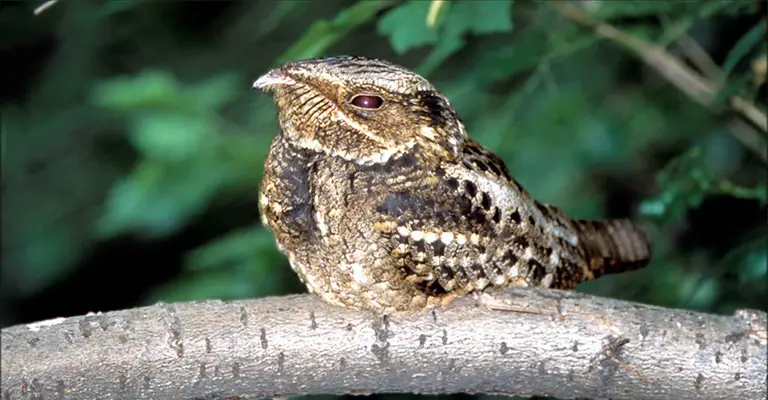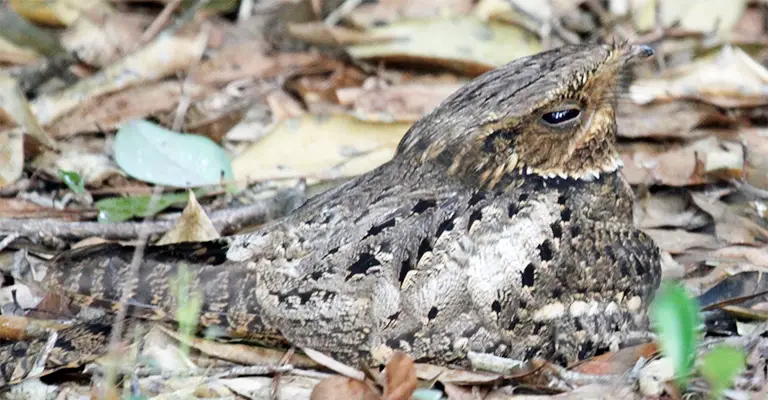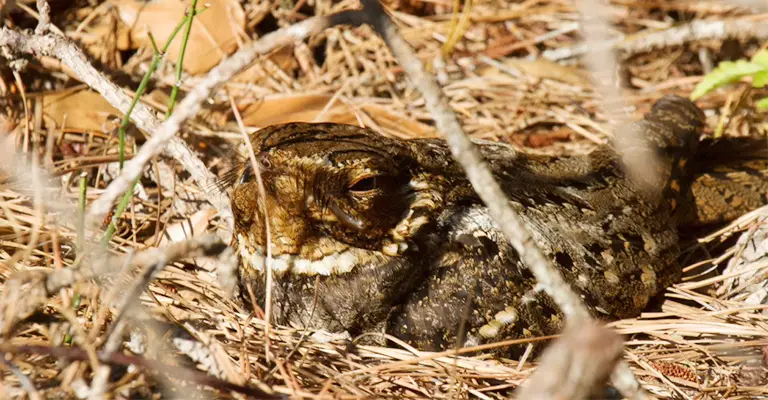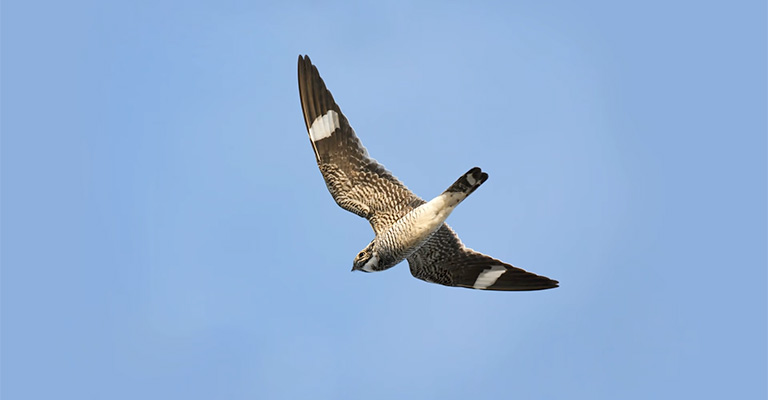In the southeastern United States, Chuck-will’s-widow, a nocturnal bird with its distinct “chuck-will’s-widow” song, captures the curiosity of nature enthusiasts.
Coexisting with these birds involves understanding their behavior, implementing non-harmful strategies, and appreciating their ecological significance. However, many of you often think about how to get rid of chuck will’s widow in some phases of your life.
You must be here because you are searching for the result. Let’s explore how to foster a harmonious relationship with Chuck-will’s-widow and the natural world.

Chuck-will’s-widow Behavior
It is very essential to understand the behavior of Chuk-will’s window to learn what to do to get rid of them. Here, you need to learn about some points that will help you understand the facts.
Chuck-will’s-widow’s Habitat and Habits
Chuck-will’s-widow is commonly found in forested areas, especially pine forests, but can also inhabit woodlands, scrublands, and open habitats. They prefer habitats with a mixture of open spaces for foraging and dense vegetation for nesting and roosting.
These birds are skilled at camouflage, often resting on tree limbs or on the ground during the day to blend in with their surroundings, resembling dead leaves.
Chuck-will’s-widow is a nocturnal species, meaning they are most active at night. They have exceptional night vision and rely on their excellent hearing to locate prey, which primarily consists of insects such as moths, beetles, and flying ants.
Their large mouths and wide gaps allow them to catch insects on the wing, making them efficient insect hunters.
Importance of Chuck-will’s-widow in the Ecosystem
Chuck-will’s-widow plays a vital role in the ecosystem by helping to control populations of nocturnal insects. Their diet primarily consists of insects that are active during the night, including many pest species.
By preying on these nocturnal insects, Chuck-will’s-widow contributes to maintaining a balanced ecosystem and helps reduce the populations of potential agricultural and forestry pests.
Furthermore, Chuck-will’s-widow is part of the intricate web of biodiversity in the southeastern United States.
Their presence contributes to the overall health and functioning of the ecosystem, as they interact with other species and participate in various ecological processes.
Legal Protections for Chuck-will’s-widow

Chuck-will’s-widow is protected by various laws and regulations due to its importance and vulnerability.
In the United States, it is covered by the Migratory Bird Treaty Act (MBTA), which makes it illegal to harm, harass, or possess these birds or their eggs, nests, or feathers without proper permits and authorization.
The MBTA helps ensure the conservation and responsible management of migratory bird species, including Chuck-will’s-widow.
It is essential to respect the legal protections in place for Chuck-will’s-widow and adhere to them to ensure the long-term survival of these birds.
Understanding and complying with the laws and regulations not only safeguards the birds but also demonstrates a commitment to conservation and the preservation of biodiversity.
Assessing the Situation
To assess the situation regarding this context, you need to learn about some more facts. Here I’ve listed them in a row.
Identifying Concerns or Conflicts With Chuck-will’s-widow
Identifying the specific concerns or conflicts related to Chuck-will’s-widow is the first step in assessing the situation. These concerns may vary depending on the context and location.
For example, some common concerns could include the proximity of nesting sites to human dwellings, potential damage to property or infrastructure, noise disturbances during the night, or conflicts with other land uses such as agriculture or recreation.
Understanding the specific issues and their potential impact is essential for developing effective strategies.
Evaluating the Need for Action and Potential Risks
Once concerns or conflicts are identified, it is important to evaluate the need for action. Assessing the severity and frequency of the issues helps determine the level of intervention required.
In some cases, it may be possible to tolerate or mitigate the impacts without actively trying to remove or deter the birds. Evaluating the potential risks associated with different courses of action is also essential.
This includes considering the effects on the birds themselves, potential legal consequences, and the unintended consequences of any intervention.
Considering Ethical and Legal Considerations
Considering the ethical implications of the chosen actions is crucial when dealing with wildlife. It is essential to respect the intrinsic value of Chuck-will’s-widow and strive for a solution that balances human needs with the preservation of natural habitats and biodiversity.
Additionally, understanding the legal protections in place for Chuck-will’s-widow is essential. This ensures compliance with applicable laws, such as the Migratory Bird Treaty Act (MBTA) in the United States, and helps avoid legal complications or negative consequences.
By carefully assessing the situation, including identifying concerns or conflicts, evaluating the need for action, and considering ethical and legal considerations, a well-informed and responsible approach can be developed.
This approach promotes effective strategies that address the specific concerns while ensuring the conservation and protection of Chuck-will’s-widow and the surrounding ecosystem.
Non-harmful Strategies for Coexistence

There is no way we can go for harmful tactics to get rid of the birds. In this case, we love sharing some non-harmful strategies. Here are some ways you can follow.
Habitat Modification
One effective strategy is to modify the habitat surrounding your property. This can be achieved by clearing excessive vegetation in the immediate vicinity, particularly near structures or areas of human activity.
By removing dense vegetation, you create a less attractive environment for nesting and roosting. Additionally, identifying and removing potential nesting sites such as old tree cavities or brush piles can discourage Chuck-will’s-widow from establishing territories near your property.
Lighting Adjustments
Adapting outdoor lighting is crucial for minimizing conflicts with nocturnal birds like Chuck-will’s-widow. Consider using motion-sensor lighting to reduce the overall time lights are active and minimize disturbance.
Using lights with less attractive spectrums, such as yellow or red lights, can help reduce insect attraction. By minimizing the presence of insects around your property, you can indirectly reduce the attractiveness of the area to the birds.
Sealing Openings
Chuck-will’s-widow may seek shelter in buildings or structures, potentially causing conflicts. Regularly inspecting your property for gaps or openings in windows, doors, eaves, or vents is essential.
By identifying and sealing these openings, you prevent the birds from accessing interior spaces. This reduces the chances of them nesting or roosting in areas where conflicts may arise.
Noise Deterrents
Using noise deterrents can help discourage Chuck-will’s-widow from nesting or roosting in specific areas. Ultrasonic devices emit high-frequency sounds that are bothersome to birds but are typically not audible to humans.
Predator calls played at appropriate times, can also deter nesting behaviors. By employing these noise deterrents, you create an environment less favorable for the birds to settle near your property.
Seeking Professional Guidance
If concerns persist or require additional expertise, it is advisable to seek professional guidance. Consulting wildlife authorities, local bird experts, or conservation organizations can provide valuable advice and specific recommendations tailored to your situation.
They can assess the unique circumstances and provide guidance on implementing effective strategies while ensuring compliance with relevant laws and regulations.
By implementing these non-harmful strategies for coexistence, you create a more harmonious environment that respects both human needs and the well-being of Chuck-will’s-widow.
These strategies aim to minimize conflicts, promote the conservation of these remarkable birds, and ensure compliance with legal protections.
Promoting Harmony With Nature

In this case, promoting the harmony of these creations with birds is essential for sure. You can go throw the following points to understand the fact.
Appreciating Chuck-will’s-widow and Its Role in the Ecosystem
Taking the time to appreciate Chuck-will’s-widow and its role in the ecosystem is fundamental to promoting harmony with nature. These birds play a crucial role in controlling populations of nocturnal insects, contributing to a balanced ecosystem.
By understanding their importance as insect predators and recognizing the unique adaptations that enable them to thrive, we can develop a deeper respect and appreciation for these fascinating creatures.
Engaging in Responsible Birdwatching and Observation
Engaging in responsible birdwatching and observation practices is an excellent way to interact with Chuck-will’s-widow while minimizing disturbances.
When observing these birds, it is essential to maintain a respectful distance and use binoculars or telephoto lenses to avoid unnecessary stress. Avoid approaching nesting sites, as this can disrupt breeding activities.
Respecting their natural behaviors and habitats helps ensure their well-being and allows for meaningful and enjoyable birdwatching experiences.
Participating in Local Birding Groups or Conservation Initiatives
Getting involved in local birding groups or conservation initiatives can have a significant impact on the conservation of Chuck-will’s-widow and other bird species.
By joining birding groups, you can connect with like-minded individuals who share a passion for birds and contribute to collective efforts in monitoring and conserving these species.
These groups often organize bird surveys, educational programs, and habitat restoration projects, providing opportunities to contribute to scientific knowledge and conservation actions.
Participating in broader conservation initiatives beyond birding groups can also contribute to the protection of Chuck-will’s-widow and its habitat.
Supporting local or national conservation organizations that work towards preserving natural areas, advocating for wildlife protection, and promoting sustainable practices can make a significant difference in the long-term survival of these birds.
Strategies for Coexisting With Chuck-will’s-widow
| Topic | Strategies |
| Habitat modification | Clear excessive vegetation near property – Remove potential nesting sites |
| Lighting adjustments | Use motion-sensor or less attractive lighting – Minimize insect attraction |
| Sealing openings | Inspect and close gaps in buildings – Prevent access to structures |
| Noise deterrents | Utilize ultrasonic devices or predator calls – Discourage nesting or roosting behaviors |
| Seeking professional guidance | Consult wildlife authorities or experts – Ensure compliance with laws and regulations |
| Appreciating Chuck-will’s-widow | Understand their role in the ecosystem – Appreciate their unique adaptations |
| Responsible birdwatching and observation | Maintain a respectful distance – Use binoculars or telephoto lenses – Avoid disturbing nesting sites |
| Participating in local birding groups or conservation initiatives | Join birding groups – Contribute to bird surveys and monitoring – Support habitat restoration and conservation efforts |
FAQs
While Chuck-will’s-widow doesn’t have specific plant preferences for nesting, it is generally helpful to avoid dense shrubbery or vegetation that provides ample cover and nesting opportunities.
Clearing excessive undergrowth and removing thick bushes near structures can make your property less attractive for nesting.
Chuck-will’s-widow primarily feeds on insects, so bird feeders aren’t effective in attracting them. Similarly, Chuck-will’s-widow typically nests on the ground or in natural cavities, so traditional birdhouses may not be suitable.
It’s best to focus on creating a natural and open environment that discourages nesting near human dwellings.
Chuck-will’s-widow are nocturnal birds and are most active during the night. You may hear their distinctive “Chuck-will’s-widow” song in the evenings or at night, especially during the breeding season.
Additionally, keep an eye out for the birds themselves, which may be spotted resting on tree limbs or on the ground during the day, camouflaged among the vegetation.
Relocating a Chuck-will’s-widow nest without proper permits and authorization is illegal, as they are protected species. It is best to consult with wildlife authorities or experts if you have concerns about a nest located near your property.
They can provide guidance on appropriate actions and ensure compliance with the law.
Wrapping Up
Coexisting with Chuck-will’s-widow requires understanding, respect, and responsible actions. By implementing non-harmful strategies, appreciating their ecological role, and participating in conservation efforts, we can foster harmony with these remarkable birds.
Let us cherish the beauty of nature, ensuring the preservation of Chuck-will’s-widow and the biodiversity they contribute to. Thanks a million times for your support.